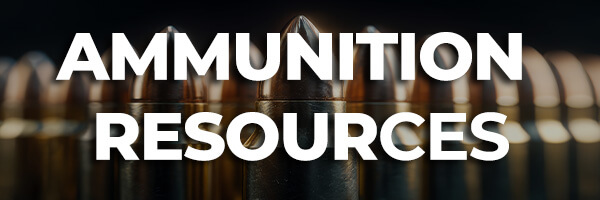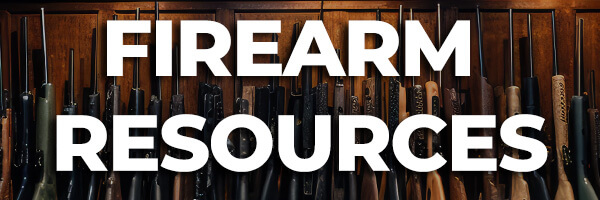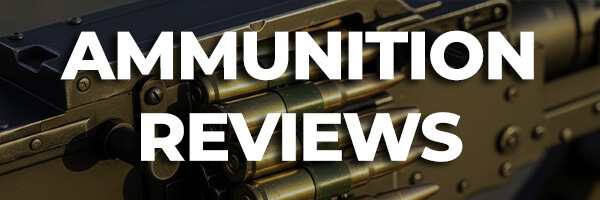Ammunition Depot Resource Center
Welcome to the Ammunition Depot Resource Center, your one-stop digital destination for trusted information, tools, and educational materials about firearms and ammunition.
Inside the AMDEP Resource Center, you’ll discover a vast library of manuals, videos, tutorials, and expert guides covering every aspect of your favorite firearm and ammunition brands.
Explore helpful sections like Ammunition Comparisons, Ammunition Reviews, and Is This Business Legit to make confident, well-informed decisions before your next purchase.
Whether you’re a new shooter or a seasoned professional, the Ammunition Depot Resource Center is designed to help you learn, compare, and shop smarter, all in one place.
Ammunition Resources
Ammunition ballistics refers to the behavior of a projectile or bullet after it is fired from a firearm.
Ammunition ballistics charts encompass a range of factors, including the projectile's range in yards, trajectory, velocity, and energy. Most ballistic ammo charts also display imperial, metric, MOA, or Mils results.
Overall, the ballistic characteristics of ammunition are an essential consideration for anyone using firearms, whether for sport or self-defense, as they can significantly impact the accuracy and effectiveness of the firearm.
Find, view, and download ammo ballistic charts and resources from the top ammunition manufacturers like Federal Premium, Precision Made Cartridge, Blazer Ammunition, and more.
Firearm Resources
Firearm schematics are technical diagrams that show the internal components and workings of a firearm.
They are typically used by gunsmiths, firearm enthusiasts, and manufacturers to understand how a particular firearm functions and to diagnose and repair any issues that may arise.
Firearm schematics are an invaluable resource for anyone looking to better understand the mechanics of firearms and to troubleshoot issues that may arise with their own handgun, rifle, or shotgun.
Find, view, and download your Firearm Schematics and Owner's Manuals from the top firearm manufacturers like Glock, Smith & Wesson, Ruger, and more.
Can't find what you're looking for? Send us an email at [email protected] and we'll make sure it gets added to our growing list.
For all other questions, please contact our Customer Service Team at [email protected]
Is this Business Legit?
Before purchasing ammo or firearms online, it’s smart to ask, “Is this business legit?” With so many retailers out there, knowing which ones are trustworthy makes all the difference.
Reputable online stores, like Ammunition Depot, Brownells, Palmetto State Armory, and MidwayUSA, have built credibility through secure payment systems, transparent business practices, and strong customer reviews.
Not all sellers meet these standards, so take time to compare key factors like product authenticity, shipping reliability, and customer service.
Learn more about our industries established online ammunition and firearm retailers to help you spot scams, avoid unreliable sellers, and make a well-informed purchasing decision with confidence.
Ammunition Reviews
Ammunition reviews provide real-world insight into the performance and reliability of various ammo brands and calibers for different shooting applications. Reading ammo reviews helps shooters understand how specific cartridges perform in terms of accuracy, consistency, recoil, and overall value.
Comprehensive ammunition reviews often cover key details such as ballistic performance, grain weight, muzzle velocity, and cleanliness of the round. These reviews also highlight user experiences from the range or field, offering practical feedback beyond manufacturer specs.
Overall, exploring detailed ammunition reviews is essential for hunters, sport shooters, and self-defense users who want dependable, high-performing rounds.
Find, read, and compare verified ammunition reviews for top brands like CCI Blazer, PMC, Winchester, and Hornady, as well as the most-trusted places to purchase popular calibers including 9mm, 12 Gauge, .223/5.56, and 300 Blackout.
Ammunition Price History
The history of ammunition prices traces how economic forces, technological advances, and global conflicts have shaped the cost of bullets and cartridges over time.
It highlights shifts driven by metal markets, manufacturing methods, and surges in civilian demand. Understanding this evolution helps shooters, collectors, and industry observers recognize why prices fluctuate and how supply and demand trends continue to influence the modern ammo market.
To dive deeper into past market trends and better understand how costs have shifted, find, read, and learn about the pricing history of your favorite caliber on our Ammunition Price History Resource page.
Ammunition Depot Resource Center FAQ
QUESTION: What is the definition of ballistics?
ANSWER: Ballistics is the science and study of the behavior of projectiles, such as bullets, in flight. It encompasses aspects of projectile motion, trajectory, and impact dynamics.
QUESTION: What does ballistic mean?
ANSWER: Ballistic refers to anything related to projectiles in motion, particularly in the context of firearms and ammunition. It describes the path and behavior of a projectile as it travels through the air.
QUESTION: What are terminal ballistics?
ANSWER: Terminal ballistics is the study of how bullets or projectiles behave upon impact with a target, including factors like penetration, expansion, and energy transfer.
QUESTION: What is a ballistics chart?
ANSWER: A ballistics chart, also known as a trajectory chart, displays the expected bullet trajectory at different distances based on factors like muzzle velocity, bullet weight, and ballistic coefficient.
QUESTION: What is bullet trajectory?
ANSWER: Bullet trajectory refers to the curved path that a bullet follows after being fired from a firearm. It is influenced by factors like muzzle velocity, gravity, air resistance, and initial angle.
QUESTION: What can affect the performance of a bullet?
ANSWER: The performance of a bullet can be influenced by factors such as muzzle velocity, ballistic coefficient, bullet weight, aerodynamic shape, air density, wind speed, temperature, and barrel length.
QUESTION: What are gun schematics?
ANSWER: Gun schematics are detailed visual representations or diagrams that illustrate the internal components, mechanisms, and assembly of a firearm. They provide insight into how a gun functions.
QUESTION: What is a pistol blueprint?
ANSWER: A pistol blueprint is a technical drawing or diagram that outlines the design, dimensions, and specifications of a pistol's components and structure.
QUESTION: What is a gun diagram?
ANSWER: A gun diagram is a visual representation that highlights the major components and parts of a firearm, allowing users to understand how the various elements work together.
QUESTION: What are the parts of a gun diagram?
ANSWER: A gun diagram typically includes parts like the barrel, slide, frame, trigger, sights, magazine, grip, safety mechanisms, and other internal components specific to the firearm type.
QUESTION: What is the anatomy of a revolver?
ANSWER: The anatomy of a revolver includes components such as the cylinder, barrel, frame, hammer, trigger, grip, ejector rod, and cylinder release latch. Revolvers have a rotating cylinder that holds multiple rounds.









